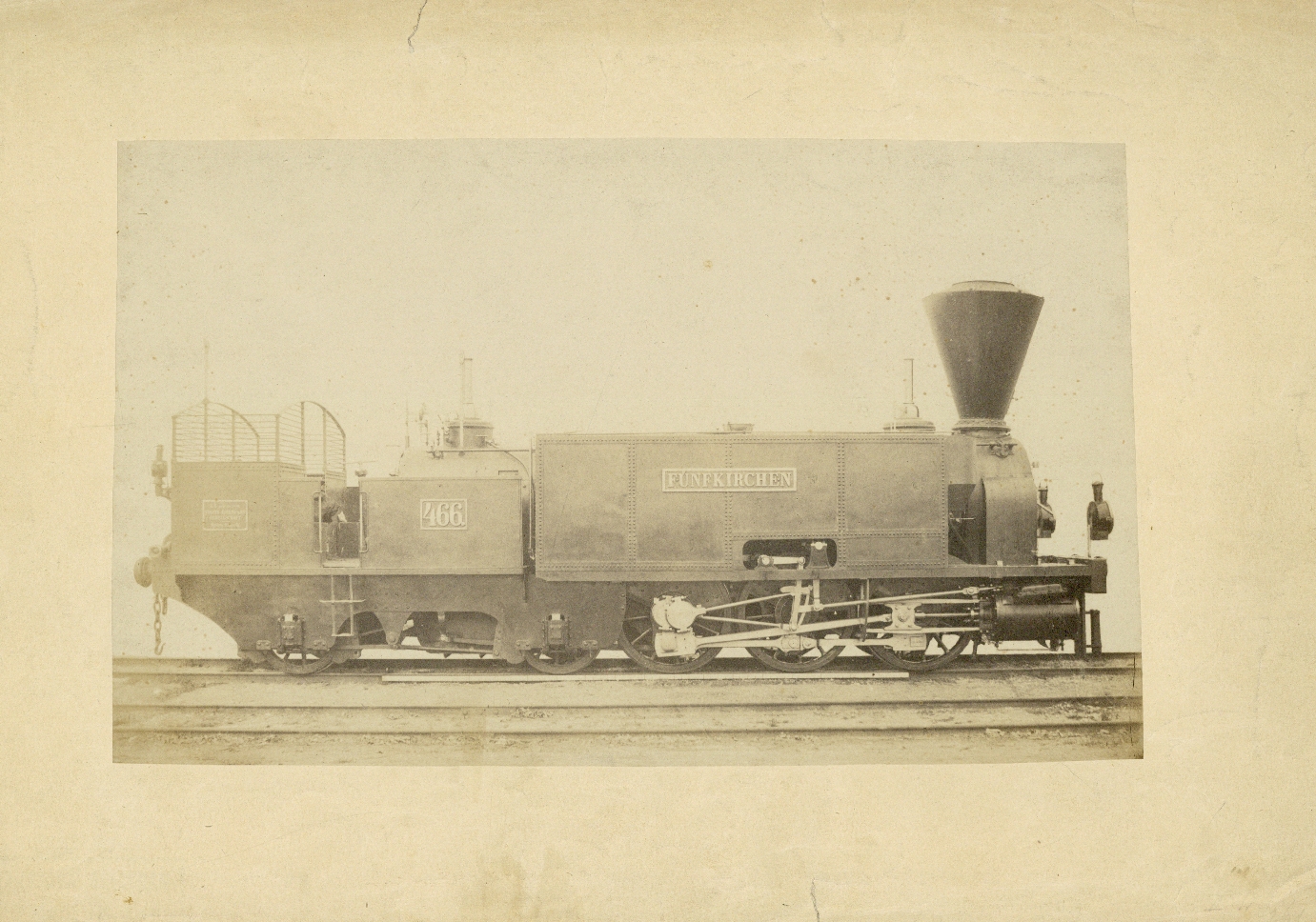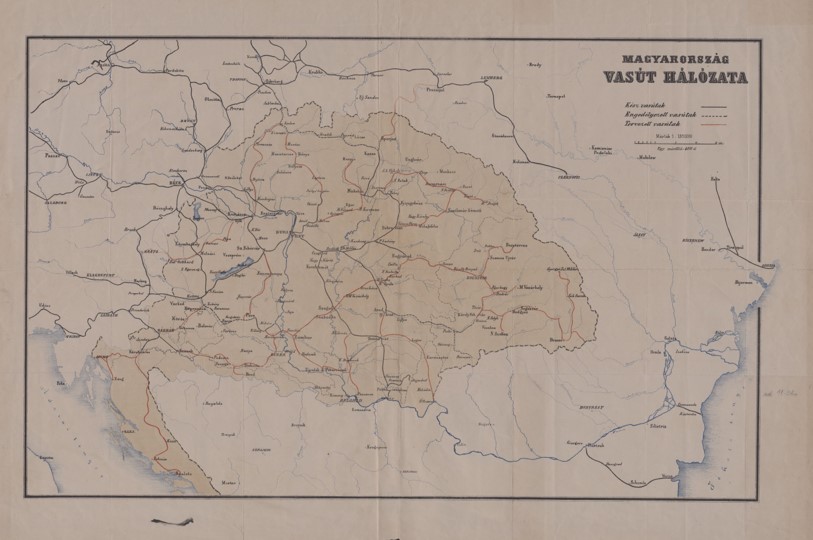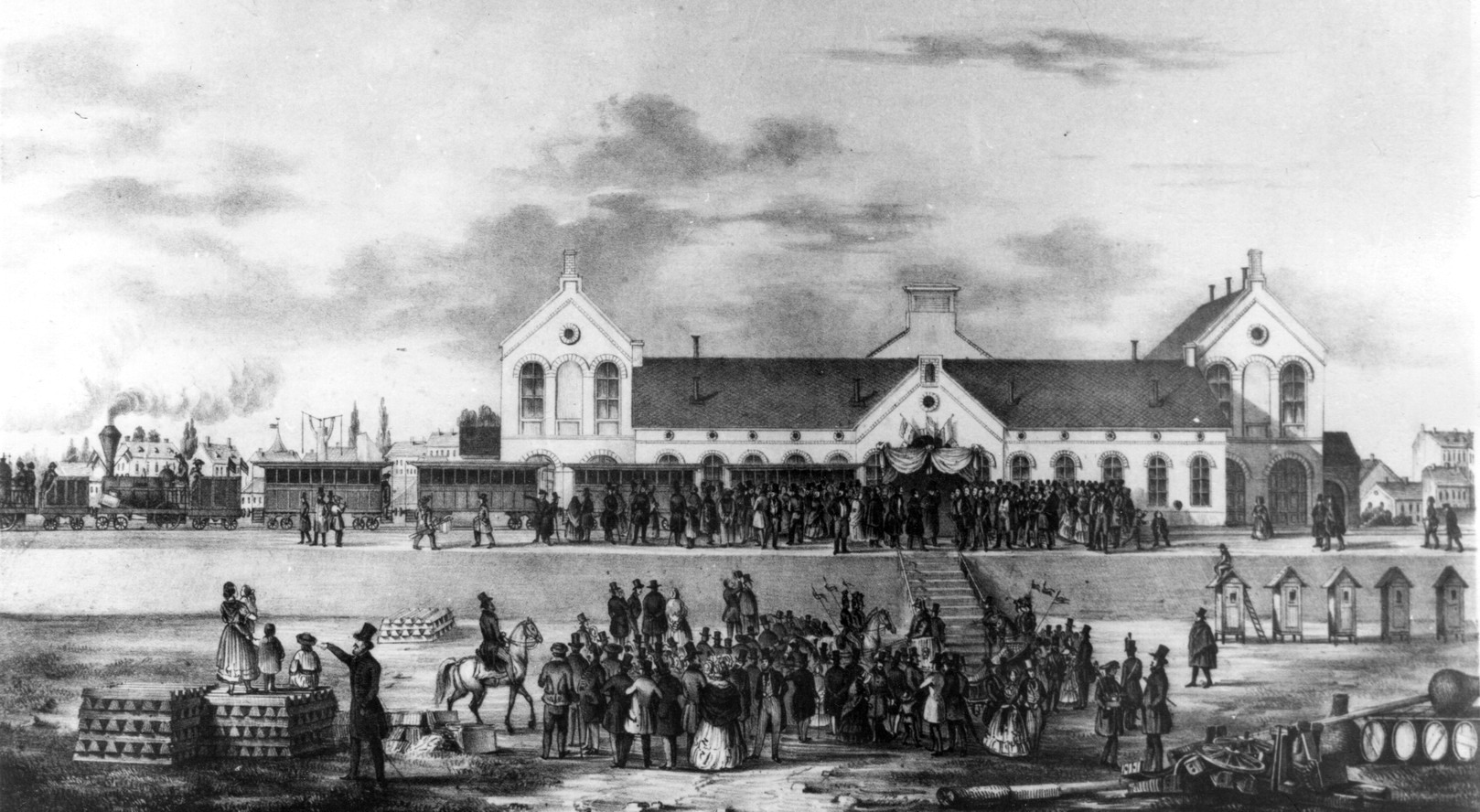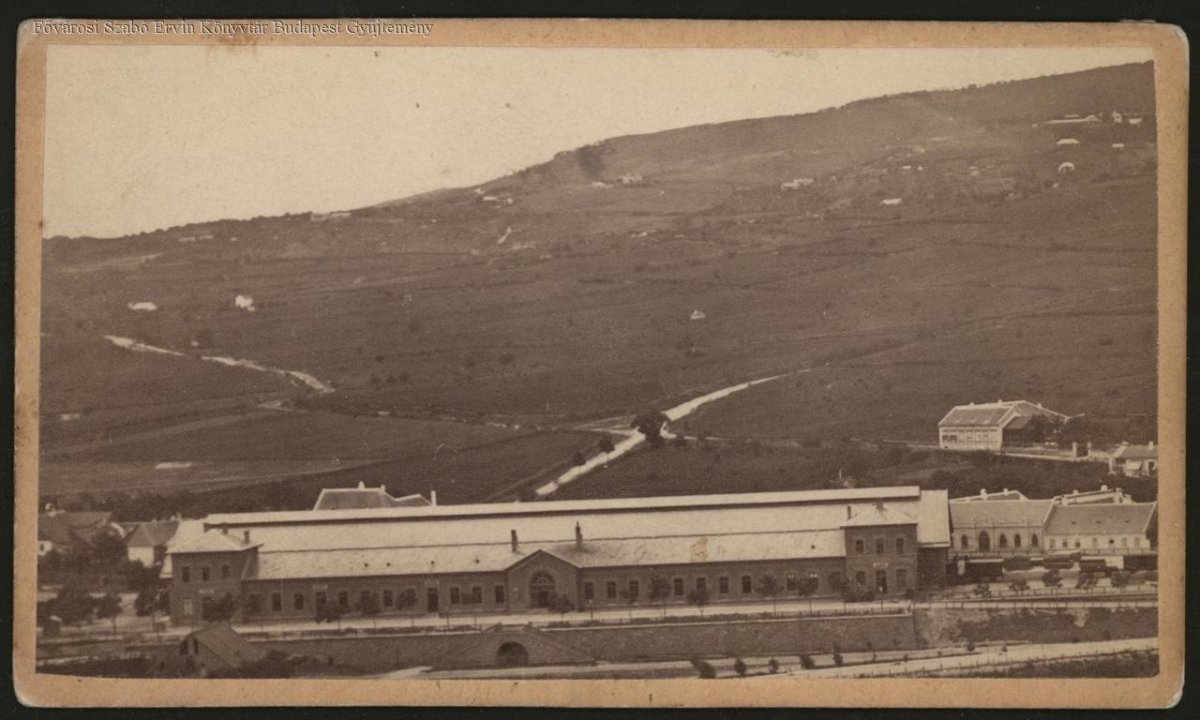At the time of the Compromise, i.e. in 1867, the domestic railway lines were far from covering the country. This year was an interesting moment in time, because it was then that the country regained self-governance, i.e. after the Compromise, transport development issues were no longer decided in Vienna, but in Pest. However, there was no state railway company at that time, only private railways operated in the country, mostly with foreign capital, and although the centre of the Hungarian railway lines was Pest-Buda, similar to the concept laid out by István Széchenyi in 1847-1848, the railway lines were actually built mainly according to the economic interests of the investors.
The very first railway line led from Pest to Vác, it was opened in 1846. It was not by chance that the first railway went here, the main goal was to connect Pest with Vienna via Bratislava. This line was built by a private company, one of the main goals of which was to get the grain of the Hungarian Great Plain to the market quickly, so the line from Pest to Szolnok was already opened on 1 September 1847.

One of the locomotives of the Imperial Royal Privileged Austrian State Railway Company - which, contrary to its name, was a private railway - in 1856 (Photo: Hungarian Museum of Science, Technology and Transport, Reference No.: TFGY 10694.1)
In the next two decades - apart from a short Austrian state railway attempt - private companies applied for and largely received permission to build railway lines, so the economic interests of these companies determined the direction of the construction of railway lines.
Let's see if a traveller wanted to travel by train from the Hungarian capital to another part of the country in 1867, where could he do it at all?
In 1867, of course, a railway line led from Pest to Vienna via Bratislava, and via Vienna the Hungarian network was connected to the network of the empire and Europe.
A railway line led from Pest through Debrecen to Kassa, branching off to Nagyvárad and Arad, from the same line branched off to Szeged, where a permanent bridge crossed the Tisza from 1857, and the railway reached Temesvár [Timisoara] and Anina through this. At that time, only these destinations were accessible by rail from Pest, not a single rail line reached the eastern or northern borders.
You could travel from Buda via the Southern Railway network, from here you could reach Székesfehérvár and from there Vienna. The Southern Railway continued towards Nagykanizsa from Székesfehérvár on the southern shore of Lake Balaton, and then continued towards Austria. A wing line led from Nagykanizsa to Szombathely and on through Sopron towards Austria, i.e. those who wanted to travel from Buda to Sopron by rail could do so either via Vienna or Nagykanizsa.

Map of Hungarian railway lines from 1869, showing the line leading to Salgótarján, which was the first Hungarian state-owned railway (Source: Hungarian Museum of Science, Technology and Transport, Reference No.: TKGY 3634)
Although Croatia and Hungary were in a personal union, there was still a railway connection with Croatia only through Austria, Zagreb could only be reached from Austria, and the line ran from Zagreb to Sziszek and Károlyváros. It was also possible to travel to Pécs by train, if one had first travelled by boat down to Mohács, because the Mohács-Pécs railway line was not yet connected to the national network.
Although the railways started from Pest and Buda, at that time it was still not possible to cross from Pest to Buda by rail, because there was no railway connection anywhere on the Hungarian section of the Danube. There were ideas and plans, but at that time it was not even decided whether the railway bridge should be built in the north or south of Pest-Buda, as a private or public investment.
Traveling by train was not common, because the tickets were expensive, i.e. only the more affluent could afford this form of travel. Mass use of the railway was made possible only by the railway tariff reform of Gábor Baross from 1889.
Although the railway made it possible to travel unimaginably faster than before, the trains ran much slower than today. At that time, the trains covered the distance from Pest to Vienna in 6 hours and 40 minutes, i.e. they were running at a speed of roughly 40 kilometres per hour. The trains went even slower in the other directions, but it was still faster than the ship or the stagecoach.

The opening of the first Hungarian railway line in 1846 on a contemporary representation
The situation changed radically in 1868, when the Hungarian Royal State Railways was formed with the nationalization of a newly built but immediately ruined railway, state railway construction began, and private investment was also allowed by the Hungarian government, which intended to follow the policy of István Széchenyi when developing the railway network. , i.e. not only to keep Hungarian economic and political interests in mind, but also to ensure that the investments also promote the development of Budapest.
Cover photo: Déli Railway Station in Buda (Photo: FSZEK Budapest Collection)




































Hozzászólások
Log in or register to comment!
Login Registration